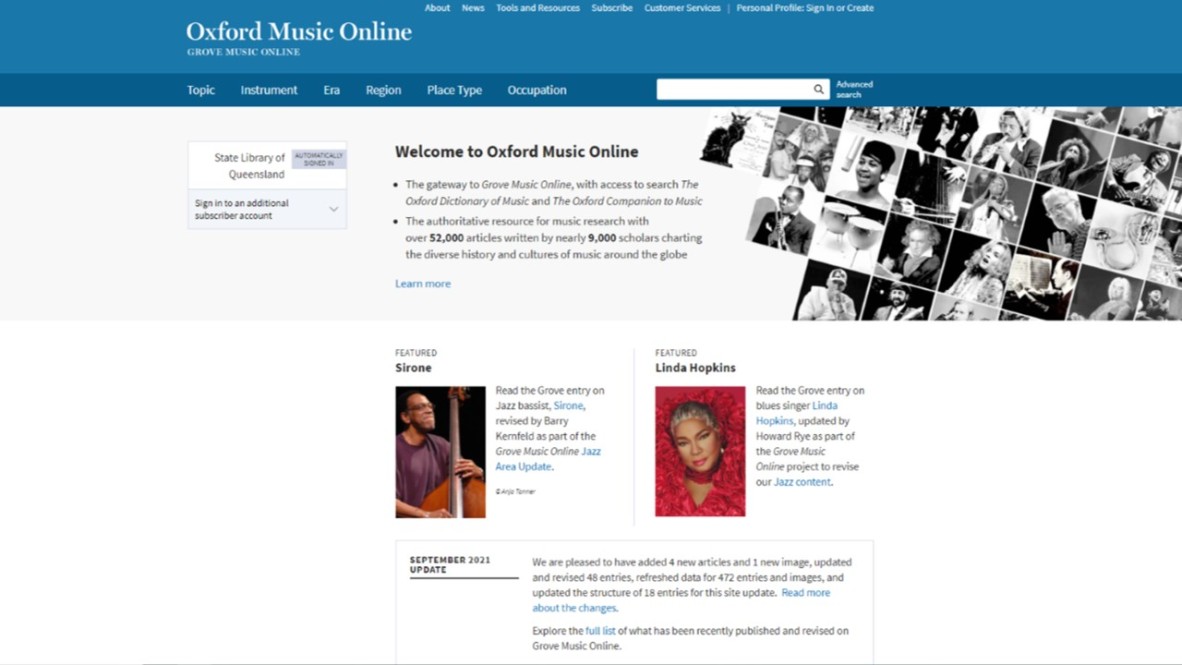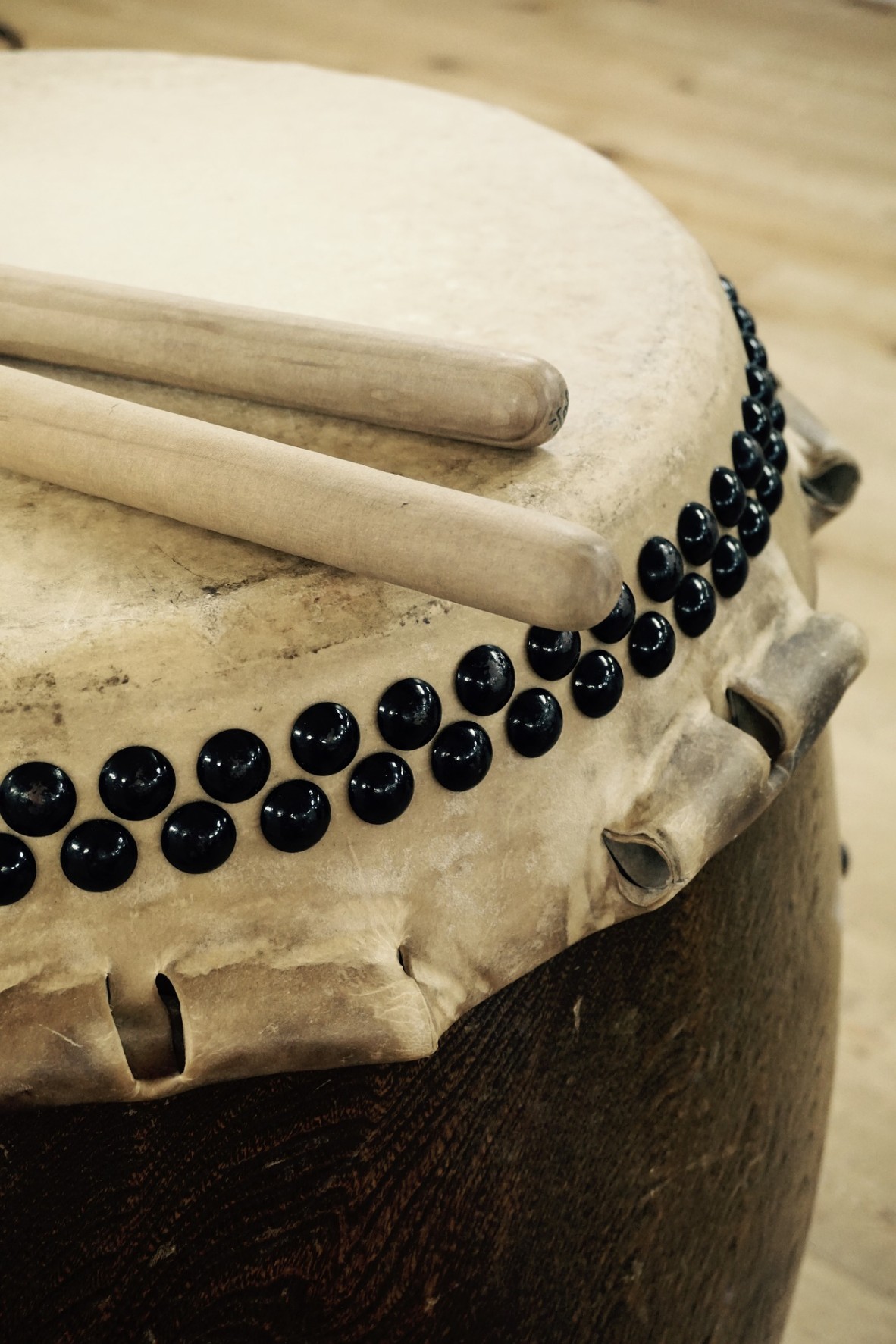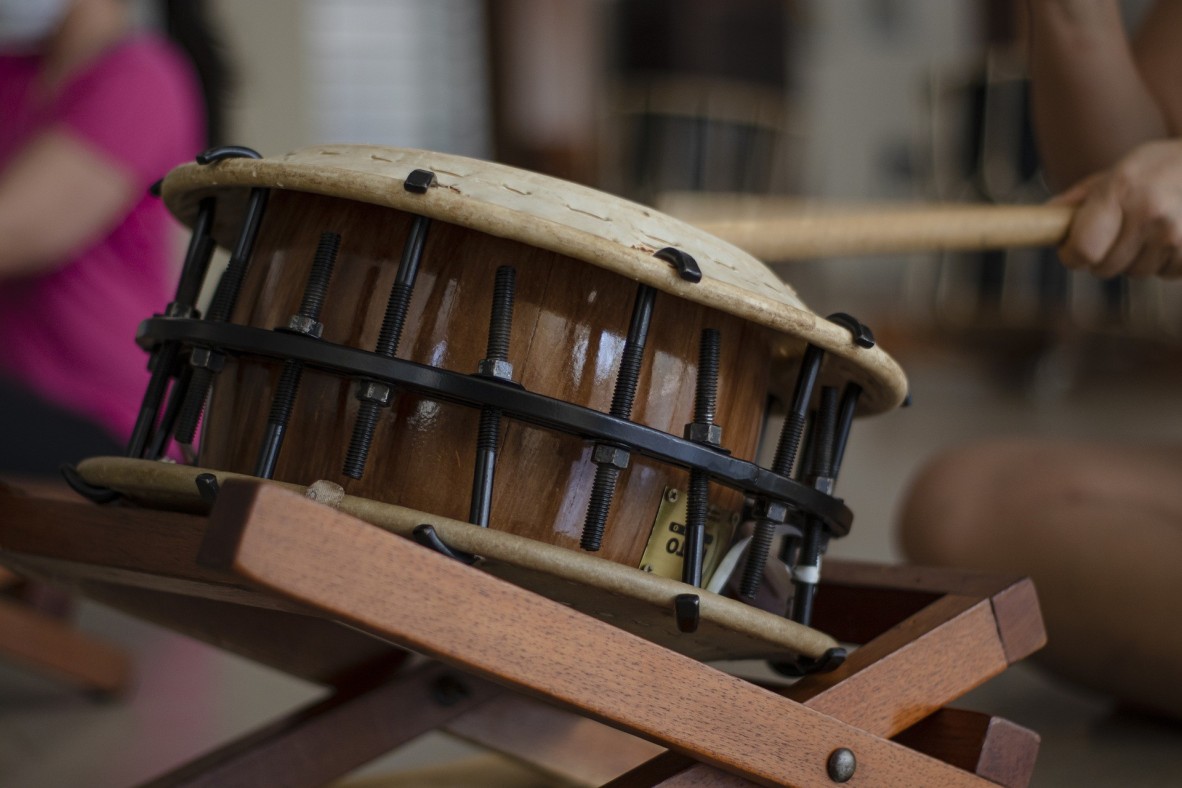Get into the Grove with Oxford Music Online
By Greg Corbett, Visitor Services Assistant, Visitor and Information Services | 25 October 2021
Oxford Music Online is an online gateway that allows you to search the Grove Music Online database, as well as Oxford resources such as The Oxford Companion to Music, all in one place. Grove Music has a long and illustrious history, beginning with the publication of Grove’s Dictionary of Music and Musicians way back in 1879, which aimed to provide a comprehensive encyclopedia for music lovers and music professionals. Today, Grove Music Online boasts more than 52,000 articles by almost 9,000 experts, providing information on music, musicians, music theory and history, as well as music culture around the world. The Grove database can be accessed through Oxford Music Online for free with your State Library Membership.

The site allows you to search for articles about music by topic, era, region and occupation, and there is a range of additional checkboxes to modify and narrow your search. I am currently learning to play the Japanese taiko drum, so I eagerly typed the word ‘taiko’ into the search bar to see what I could find.
The first result was an article simply entitled ‘Taiko’, by Paul J. Yoon. I learned some fascinating things about the history of the instrument, including fabled historical usages such as encouraging soldiers in battle, scaring away pests, or even the taiko’s role in determining the location of borders of Japanese villages (at the point where a drum played at the centre of the next village could no longer be heard). Considering how loud a taiko drum can sound, I am inclined to think that all of the above usages are plausible!

A chu-daiko used in ensemble drumming.
The article also details the taiko’s evolution from time-keeping instrument to the appearance of ensemble taiko (‘kumi-daiko’) groups in the 20th century, with performances featuring many drums on stage at one time. I’ve so far had limited experience playing as part of an ensemble, but I can definitely say that keeping the beat is not the only consideration; you need to be on the ball to know when your next part is coming up, and you have to be aware of what your fellow members are playing. Taiko playing is a group experience!
Scanning further down the search results, I found an article by Jane Alaszewska entitled ‘Kumi-daiko’, specifically detailing the ensemble style of taiko drumming mentioned above, and how groups have been established outside of Japan, especially in North America, but also in Brazil, England and Australia. It’s easy to see why taiko drumming caught on and proliferated abroad in this way; the ensemble format makes for a great spectacle.
Next, I found what appeared to be sheet music entitled, Hayashi (drums and flute) notation from the nō dance ‘Jo no mai’. It was the first time for me to see formalised taiko notation, which I understand is a rare commodity. This seems to be due to the reliance of taiko groups on listening to each other, and passing songs on using the oral tradition and ‘kuchi shoka’, a method of describing each drum hit using phonetics.

A shime-daiko used in ensemble drumming.
A further scan of the search results revealed quite a few articles on each of the various styles of taiko drumming, as well as articles about prominent taiko musicians. These articles would make for excellent resources for aspiring taiko aficionados looking to develop a broad knowledge of the instrument in all its forms.
It was particularly interesting reading about Daihachi Oguchi, whose background as a jazz drummer allowed him to fuse jazz and traditional taiko, and in the process popularise ensemble taiko drumming as a contemporary art form. I was also intrigued to learn that as taiko drumming has matured abroad, this has caused a divergence from established styles in Japan. It must be interesting for a Japanese musician to observe taiko drumming styles organically absorbing the musical traditions of other countries to become a truly global and multicultural art form.
Oxford Music Online is available to use free with your State Library membership. To access it, log in to OneSearch and search the catalogue for ‘Oxford Music Online’, then click on the link in the ‘suggested database’.
References:
- Alaszewska, J 2001, ‘Kumi-daiko’, Grove Music Online, viewed 7 October 2021, <https://www-oxfordmusiconline-com.ezproxy.slq.qld.gov.au/grovemusic/view/10.1093/gmo/9781561592630.001.0001/omo-9781561592630-e-0000049402>
- ‘Hayashi (drums and flute) notation from the nō dance ‘Jo no mai’; column 1 contains the kotsuzumi pattern names, column 2 the kotsuzumi and drum call notation, column 3 the ōtsuzumi pattern names and notation with drum call notation (with the taiko patter)’, Grove Music Online, viewed 7 October 2021, <https://www-oxfordmusiconline-com.ezproxy.slq.qld.gov.au/grovemusic/view/10.1093/gmo/9781561592630.001.0001/omo-9781561592630-e-8000003176>
- Yoon, P 2013, ‘Taiko’, Grove Music Online, viewed 7 October 2021, <https://www-oxfordmusiconline-com.ezproxy.slq.qld.gov.au/grovemusic/view/10.1093/gmo/9781561592630.001.0001/omo-9781561592630-e-1002258383>
Comments
Your email address will not be published.
We welcome relevant, respectful comments.